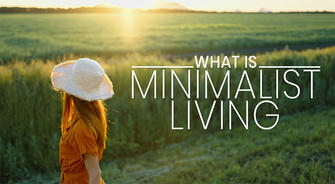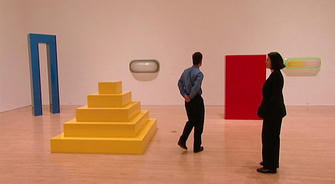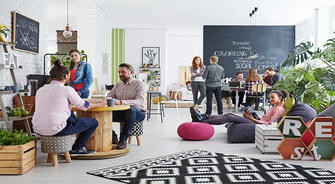In an age defined by consumption and accumulation, a counter-movement is gaining profound traction: minimalist living. Far from a sterile, ascetic existence, minimalism is a deliberate philosophy that posits how less can indeed lead to more freedom. It's about consciously reducing what you own to make space for what truly matters: experiences, relationships, personal growth, and a profound sense of liberation from the burdens of excessive possessions. This lifestyle shift, adopted by individuals across diverse demographics, offers a powerful antidote to modern material pressures, promising not just financial savings but a richer, more intentional life.

The Burden of Accumulation
Our consumer-driven society often equates happiness and success with material wealth and endless acquisition. However, the pursuit of "more" often comes at a significant cost. The average American home, for example, has an estimated 300,000 items (Los Angeles Times, 2014), and the storage industry is booming, indicating that people own more than their homes can comfortably hold. This incessant drive to accumulate leads to:
Financial Strain: Buying, maintaining, and storing possessions can drain financial resources. Debt related to consumer goods is a common burden for many households.
Time Consumption: Managing possessions—organizing, cleaning, repairing, and shopping for more—can consume a disproportionate amount of time and mental energy.
Mental Clutter and Stress: A cluttered physical environment often reflects or contributes to a cluttered mind. The sheer volume of choices and things to manage can induce anxiety and overwhelm.
Environmental Impact: Overconsumption leads to increased resource depletion, waste generation, and a larger carbon footprint.
Against this backdrop, minimalism offers a compelling alternative, promising a path to a life less weighed down and more expansive.

Freedom Through Less: The Core Tenets of Minimalism
Minimalism is not about deprivation; it's about discerning what adds value to your life and consciously removing what doesn't. The "freedom" it offers manifests in several powerful ways:
Financial Freedom: By reducing unnecessary spending on material goods, individuals can save more, reduce debt, and have greater flexibility to invest in experiences, education, or early retirement. This shift from consumer debt to financial stability is a significant source of liberation.
Time Freedom: Less stuff means less time spent organizing, cleaning, and maintaining. This reclaimed time can be redirected towards passions, relationships, learning, or simply enjoying moments of stillness.
Mental Freedom: Decluttering your physical space often leads to decluttering your mind. With fewer distractions and less decision fatigue over possessions, mental clarity improves, reducing stress and allowing for greater focus on meaningful pursuits.
Location Freedom: With fewer ties to physical possessions, it becomes easier to relocate, travel, or adopt a more nomadic lifestyle, opening up new opportunities for personal and professional growth.
Freedom from Societal Expectations: Minimalism encourages a detachment from the pressure to "keep up with the Joneses." It's about defining success and happiness on your own terms, rather than conforming to external material benchmarks.
Environmental Freedom (from guilt): Conscious consumption and reduced waste contribute to a smaller environmental footprint, fostering a sense of responsibility and peace of mind about one's impact on the planet.

Real-World Embodiments of Minimalism
The beauty of minimalism lies in its adaptability; it's not a one-size-fits-all solution but a spectrum of choices.
Case Study 1: The Tiny House Movement A tangible manifestation of radical minimalism is the tiny house movement. People voluntarily choose to live in homes typically under 400 square feet, significantly reducing their physical footprint.
•Impact: This lifestyle forces extreme decluttering and conscious consumption. Residents often report substantial financial savings (low mortgage or no mortgage, reduced utility bills), increased mobility, and a profound connection to nature. For example, individuals like Dee Williams, a pioneer in the tiny house movement, shared how downsizing her life after a health scare led to more time for travel, volunteer work, and building stronger relationships, directly linking less ownership to greater life fulfillment (Williams, 2014). This radical reduction in physical possessions frees up capital, time, and mental space for richer life experiences.
Case Study 2: The Digital Nomads Many digital nomads epitomize a form of practical minimalism. They often live out of a suitcase or a backpack, prioritizing experiences and work flexibility over permanent residence and extensive belongings.
•Impact: By shedding most physical possessions, they gain incredible location independence. They invest in lightweight, versatile items and digital tools. This allows them to explore different cultures, live in various cities for short periods, and connect with global communities, demonstrating how minimized possessions directly enable a life of continuous adventure and learning. The focus shifts from accumulating things to accumulating memories and skills.
Implementing Minimalism: Practical Steps and Guidance
Adopting a minimalist lifestyle is a journey, not an overnight transformation. Here's a practical roadmap:
1.Start Small: The "One In, One Out" Rule:
For every new item you bring into your home, get rid of an old one. This simple rule helps stem the tide of accumulating more.
Practical Tip: Begin with one room or even one drawer. Sort through items, keeping only what you truly use or love.
2.Define Your "Why":
Understand what freedoms or benefits you hope to gain. Is it financial, more time, less stress, or something else? Your "why" will be your motivation when the process gets tough.
Practical Tip: Write down your motivations and revisit them regularly.
3.Declutter Systematically:
The Four-Box Method: Label four boxes: "Keep," "Donate/Sell," "Trash," and "Move to Another Room." Go through items one by one and assign them to a box.
The KonMari Method: Ask yourself, "Does this spark joy?" when holding an item. If not, thank it and let it go. This method emphasizes emotional connection to possessions.
The 30-Day Minimalism Game (by The Minimalists): On day 1, get rid of 1 item. On day 2, 2 items, and so on, for 30 days. This makes decluttering a fun challenge.
Practical Tip: Don't try to declutter your entire home in one weekend. Break it down into manageable chunks (e.g., "this weekend, I'll tackle my closet").
4.Digitize and Declutter Paper:
Scan important documents, photos, and sentimental papers. Use cloud storage for easy access and backup.
Practical Tip: Set up a system for incoming mail to prevent new paper clutter.
5.Rethink Shopping Habits:
Conscious Consumption: Before buying something, ask yourself: Do I truly need this? Does it add value to my life? Can I borrow it? Can I make do with what I have?
Quality Over Quantity: Invest in durable, versatile, high-quality items that will last, rather than cheap, disposable ones.
Experiences Over Things: Prioritize spending on travel, cl*is*, concerts, or unique adventures over material goods.
Practical Tip: Implement a 30-day waiting period for non-essential purchases. If you still want it after 30 days, consider buying it.
6.Create Intentional Spaces:
Once you've decluttered, intentionally design your living spaces to be functional, calming, and reflective of your values.
Practical Tip: Leave some empty spaces. Not every surface needs to be filled.
7.Address Sentimental Items:
This is often the hardest part. Consider digitizing photos, keeping only a few treasured mementos, or creating a small "memory box" rather than hoarding everything.
Practical Tip: Take photos of sentimental items before donating them, to preserve the memory without the physical object.

Conclusion
Minimalist living is far more than an aesthetic choice or a fleeting trend; it is a profound philosophy that reorients individuals towards a life of greater purpose and genuine freedom. By challenging the ingrained notion that more possessions equate to more happiness, minimalism illuminates a path where reduced clutter leads to increased financial agility, reclaimed time, mental clarity, and the boundless freedom to pursue what truly enriches the soul. In a world constantly urging us to buy, buy, buy, the quiet revolution of living with less offers a powerful, liberating alternative. The ultimate goal isn't an empty home, but a full life.




